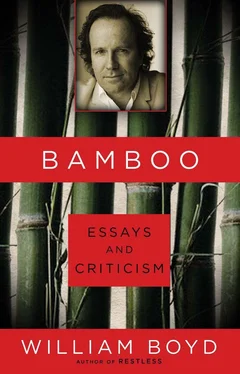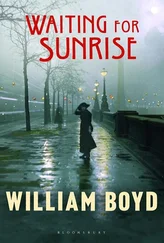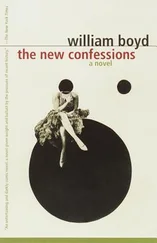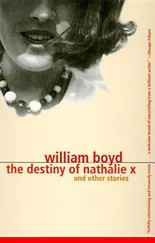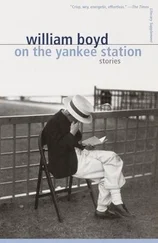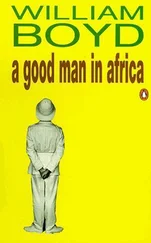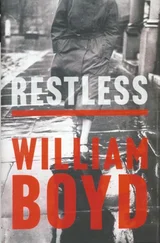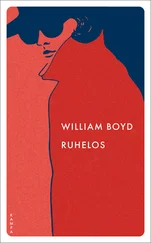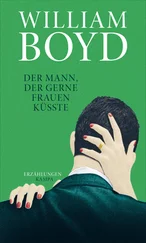Klee too, interestingly enough, was very conscious of where his picture ended — took pains pointedly to establish the picture edge (often achieved in his case by a form of mounting). In both Klee and Hodgkin the rationale behind this practice can be summed up thus: the more evident the frame — the more “edged” the picture — so the more discrete the image becomes. The concomitant idea of a cinema frame is entirely wrong here. These pictures are resolutely bounded, hemmed in. Nothing is implicit beyond the picture’s border. The gaze may not wander, it is precisely focused.
And within that frame Hodgkin spreads or stipples his refulgent colour tones. The effect, it has to be said, is highly seductive. These are paintings you covet, that boldly change your mood, that — to put it very crudely — you want to steal (no higher praise?). Many artists achieve this effect from time to time, but few can sustain it over a whole body of work: Matisse, Braque, Sam Francis are some modern artists that come to mind, but it is a tribute to Hodgkin’s mastery of colour that time and again one finds oneself entranced, ravished by the intensity of contrast, of counterposing and harmonizing colour and hue.
This is, I would claim, the initial response to a Hodgkin painting: immediate and instinctive, almost physical, I find, provoking an interior shout or laugh of recognition that this sorcery has worked so swiftly upon you. It is not simply a question of electric ultramarines offset by Naples yellows. Hodgkin can work his magic with a limited palette too. A picture like After Degas is completely beguiling, playing with a pistachio green and a chestnut brown and yet managing to glow as if it were lit from within.
The paint is applied in certain basic modes. There is the splodge, or dotted, or stippled effect and then there is what might be termed the smear, or swathe, often a gentle ogee or section of a curve in which the history of the painted gesture can be read. The loaded brush passing over the wooden ground, releasing its thinning paint to reveal colours beneath. This apparent spontaneity is, we now know, the product of possible years of reflection and afterthought and is far removed from the aleatoric frenzy of the abstract expressionist. However, like the abstract expressionist, Hodgkin’s painting can often be described as “gestural,” but it is important to establish that the individual gesture has been studied, rejected and reapplied many times and is not the impromptu slashing of some tormented id.
Klee, 1908:
By using patches of colour and tone it is possible to capture every natural impression in the simplest way, freshly and immediately.
This was Klee documenting his slow shift from a heavy reliance on the graphic to a greater confidence with colour. By 1975, the graphic element in Hodgkin’s work is almost entirely subsumed by the process Klee describes above. The drawn object — a figure, a window, a tree — is at most blurrily present or is hugely stylized in the paintings of the last two decades. But Hodgkin does not rely only on colour and tone to achieve all his ends. There is no doubt — whatever protestations to the contrary — that the titles he appends to his paintings are designed to have an effect on the whole. Otherwise why not call them Composition no. 168 or some such, if it were simply a matter of designation? But in almost every Hodgkin the totality of the “impression” the painting conveys is adulterated, sometimes significantly, sometimes in a minor way, by the title the artist gives to it. (Again, this is an old trick — even the banal can be rendered portentous by a suitable title, as both Marcel Duchamp and Joseph Beuys were aware.) Hodgkin has consistently individualized his paintings by the titles he bestows on them. Sometimes this has the effect of a lens twitched into focus. In Red Bermudas , for example, crude columns of beige and red suddenly become the bottom half of a sunbather. The title In Bed in Venice makes the painting immediately semi-figurative. Whereas Haven’t We Met? Of Course We Have or Burning the Candle at Both Ends remain impenetrably private references. This form of titling can also, it must be said, be an irritating affectation. The innocently ignorant viewer is stymied, redoubtably bogged down in his ignorance, denied the significance that the painting clearly holds for the artist and a few privileged others. A sense of exclusion is fostered, and nobody likes to be left out.
The late Bruce Chatwin was the subject of a Hodgkin painting (of the 1960s and not exhibited) and explained its genesis and key points de repère . The inspiration was a dinner in Chatwin’s minimalist flat decorated only by a Japanese screen and “the arse of an archaic Greek marble kouros.” Mr and Mrs Hodgkin and a couple called the Welches were the other guests. “The result of that dinner,” Chatwin wrote,
was a painting called Japanese Screen in which the screen itself appears as a rectangle of pointillist dots; the Welches as a pair of gun turrets, while I am the acid green smear on the left, turning away in disgust.
Chatwin gives a further insight into Hodgkin’s approach:
I remember Howard shambling round the room, fixing it in his memory with the stare I came to know so well.
Chatwin also elucidates another painting called Tea , which he explains as “a seedy flat in Paddington where a male hustler is telling the story of his life.”
Hodgkin may not encourage us to attempt an interpretation or to try to seek out a figurative element in his paintings, but there is no doubt that an important side effect of the titles is to make us do exactly this. In fact I think this tendency is a distinct advantage even though we are frequently balked and defeated. There is a figurative undercurrent in Hodgkin’s work, sometimes strong, sometimes subtle, and the paintings, even the most seemingly abstract, benefit from this potential urge to investigate and decode.
It is an instinctive and natural process in any event. The eye and the mind unconsciously seek to arrange and interpret the phenomena they encounter, and particularly those things deliberately presented to them, a category that includes abstract paintings hanging in art galleries. This natural human urge has to be curbed voluntarily or by some formal element in the painting, if we are to respond to it, judge and appreciate it solely, purely, in terms of shape, colour and composition. Hodgkin’s paintings — with their knowing allusiveness, their taquineries , and their representational shadowings — encourage us to look deeper, to go beyond the initial aesthetic thrill and try to see if there are more profound chords to be struck.
What we are talking about here is a particular stimulus common to certain works of art where visceral delight cohabits with analytical curiosity or even analytical imperatives. The two responses are not mutually exclusive, they can exist separately and can be present fortissimo or piano . But in Hodgkin’s case I find that what I have described as the aesthetic thrill generates a potent need to understand how this thrill was brought about. Vladimir Nabokov said that the first response to a work of art should be with the nape of the neck, but there is more going on in a Hodgkin painting than mere spine tingling. There is a complexity of reaction that functions on deeper, more cerebral levels too, and that demands further deliberation. The best of Hodgkin’s paintings, and there are many of them, provoke this response, and this explains, I think, both the unique frisson his work delivers — its sheer pleasure quotient — and its ultimate seriousness.
Klee’s art functions in the same way, it seems to me: it both delights on a simple level and reveals complexities of more profound and complex tenor. I don’t want to push the Klee-Hodgkin thesis too far — I’m reluctant to posit Hodgkin as a late twentieth-century Klee; there are marked differences on the graphic level, for example — but time and again the correspondences illuminate and odd affinities elide harmoniously: reasons for admiring Klee will be found to be similar to the reasons for admiring Hodgkin.
Читать дальше
